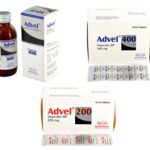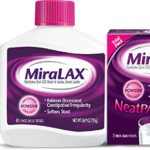Enema Easy Go: Composition, Uses, Side Effects, Warning

An enema administration is a technique used to stimulate stool evacuation. It is a liquid treatment most commonly used to relieve severe constipation. The process helps push waste out of the rectum when you cannot do so on your own. Enemas are available for purchase at pharmacies for home use, but you should ask a doctor or nurse for specific instructions to avoid injury.
Other types of enemas are administered to clean out the colon and better detect colon cancer and polyps. If you have concerns or worsening symptoms after an enema, ask a doctor right away.
What is Enema Easy Go?
Easy Go Enema is a ready to use fluid for enema made using modern and unique composition without phosphates and without sodium. Enema Easy Go runs instantly and efficiently and does not irritate the intestinal lining. It also has a modern nozzle with one-way valve!
Enema Easy Go manufactured by Gilco Pharm is the only one recommended by the Geriatric Division of the Isreal Ministry of Health for patients over the age of 60.
How quickly does an Enema Easy Go work?
Some people find that they have several additional bowel movements in the hours after an enema. For this reason, many plan to stay home for the rest of the day after an enema is administered. But for the most part, you may carry on with your regular routine after the enema process is complete.
What is an enema administration used for?
They have been used for hundreds of years to treat chronic constipation and prepare people for certain medical tests and surgeries. Constipation is a common gastrointestinal condition. It occurs when the colon is unable to remove waste through the rectum. People with this condition have three or fewer bowel movements over a seven-day period. Mild constipation often occurs when you don’t eat enough fiber or drink enough water on a regular basis. Daily exercise also helps to prevent constipation.
An enema administration is most commonly used to clean the lower bowel. However, this is normally the last resort for constipation treatment. If diet and exercise are not enough to keep you regular, your doctor might recommend a laxative before trying an enema. In some cases, laxatives are used the night before an enema administration to encourage waste flow.
Enemas may also be used before medical examinations of the colon. Your doctor may order an enema prior to an X-ray of the colon to detect polyps so that they can get a clearer picture. This procedure may also be done prior to a colonoscopy.
How do you use an easy go enema?
Each enema kit is slightly different and should come with clear instructions. Reading these instructions carefully can help make sure enema use is safe and effective.
Anyone with sufficient flexibility in their arms and shoulders to reach behind them should be able to use an enema at home.
There are some risks when using an enema:
- Using too much liquid: In this case, the body may hold some liquid in and release it without warning.
- Stretching the bowel: This increases the chance of perforation, which is a risk when the lining of the colon is torn. It can cause the colon’s contents to leak into the body.
- Using liquid that is too hot or cold: This can cause discomfort or pain. The liquid in an enema should be at room temperature.
Use the recommended amount of room temperature liquid, and do not use an enema too frequently.
Things to remember
Each enema kit is slightly different and should come with clear instructions. Reading these instructions carefully can help make sure enema use is safe and effective.
Make sure to plan enough time for the enema to work and to take a rest afterward, if needed. Doctors generally recommend having access to a bathroom for 1 hour after using an enema.
An enema can be uncomfortable, but it should not be painful. If there is a pain, stop and seek medical advice. Using petroleum jelly can ease discomfort during insertion.
Enema instructions
Instructions for every enema kit are different, but most follow these general steps:
- Choose a quiet place with space to lie down, ideally a bathroom, and have towels, a timer, and the enema kit ready.
- Remove all clothing from the lower half of the body.
- Wash the hands with soap and hot water and dry them thoroughly.
- Lay a towel on the floor and lie on the left side of the body if right-handed or on the right side of the body if left-handed.
- Bend the knee of the topmost leg, and place a rolled towel underneath the knee to support it.
- Remove the cap from the nozzle of the enema.
- Gently insert the tip of the nozzle into the anus, and continue inserting it 10 centimeters (3–4 inches) into the rectum.
- Slowly squeeze the liquid from the container until it is empty, then gently remove the nozzle from the rectum.
- Wait for the enema to take effect. This can take anywhere from 2 minutes to 1 hour, and the kit’s instructions should give a more specific estimate.
- Go to the toilet as usual to empty the bowels.
What are the side effects of Enema Easy Go?
When conducted properly following a doctor’s instructions, enema administrations are generally considered safe. A barium enema can cause waste to take on a white color for a few days afterward. This is the normal effect of barium and should clear up on its own. If you can’t produce waste, talk to your doctor about ways to loosen your stool.
Forcing an enema into the rectum can cause irritation and damage to surrounding tissue. Never force the tube into the rectum. If problems persist, try administration at a later time or call your doctor. Blood that is present in the stool after the enema may mean there is rectal damage or an underlying medical problem. Consult with a physician immediately regarding any rectal bleeding.
Your risks for enema-related complications are greater if you administer the tubes multiple times a day. The best course of action is to use the enema once a day, and around the same time every day, as directed by a doctor. This not only reduces side effects, but will also help to train your body to release waste regularly. If constipation continues for more than a few days, call your physician.
In extremely rare cases, the incorrect administration of an enema can cause an embolism (or blockage) to form. Pulmonary embolisms, which occur in the lungs, can be fatal. In other rare cases, an incorrectly administered barium enema can result in perforation of the rectum.
Older adults should avoid the over-the-counter “Fleet” enema, which contains sodium phosphate. A small study in JAMA Internal Medicine linked it to serious complications such as kidney failure.





